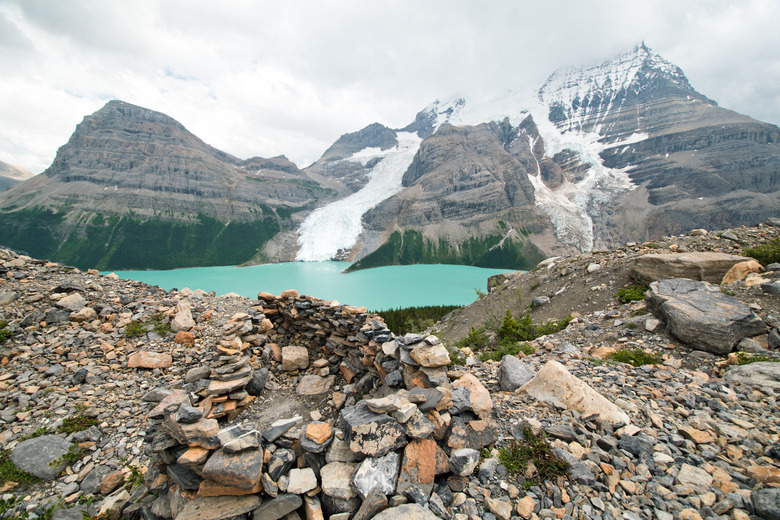5 Causes Of Global Warming
The bulk of the world's scientific community is in agreement that our planet is becoming warmer and that one of the main factors of global warming is human activity. Scientists agree that the release of gases that prevent the dissipation of ground heat into space – a phenomenon known as the greenhouse effect – is responsible. The gases primarily responsible for global warming include water vapor, carbon dioxide, methane, nitrous oxide and chlorofluorocarbons (CFCs). Humans produce them by burning fossil fuels and engaging in various agricultural and industrial activities. The Earth itself also contributes with natural processes that create greenhouse gases and accelerate the warming trend.
Greenhouse Gases Are the Main Reasons for Global Warming
Greenhouse Gases Are the Main Reasons for Global Warming
Although carbon dioxide receives the most press as the culprit responsible for global warming, water vapor is actually the most abundant greenhouse gas in the atmosphere. Carbon dioxide still deserves its notoriety, however. It may be a minor component of the atmosphere, but its increased abundance is contributing to the warming trend, according to NASA. Humans exacerbate the problem by cutting trees that absorb this gas and by adding other greenhouse gases to the mixture over and above those that enter through natural processes. In addition, one of the global warming causes might be astronomical.
Cause #1: Variations in the Sun's Intensity
Cause #1: Variations in the Sun's Intensity
The Earth receives its warmth from the sun, so it's reasonable to suspect that our home star may be one of the reasons for global warming. Although the amount of energy coming from the sun does vary and may have been responsible for warming in the past, however, NASA and the Intergovernmental Panel on Climate Change (IPCC) have ruled this out as a cause of the current warming trend. The average energy coming from the sun generally has remained constant since 1750, and the warming does not occur uniformly throughout the atmosphere. The upper layer is actually cooling as the bottom layer becomes warmer.
Cause #2: Industrial Activity
Cause #2: Industrial Activity
Since the Industrial Revolution, humans have been burning fossil fuels such as coal and petroleum for energy, which releases carbon dioxide into the atmosphere. A quarter of this is for heat and electricity, while another quarter is for other industrial processes and transportation, which includes gasoline- or diesel-powered cars, trucks, trains and airplanes. The other half of the energy is used for various other purposes, including agriculture, cement production and oil and gas production. These processes also release other greenhouse gases, such as methane and CFCs, although the concentration of CFCs has declined since their use was banned in 1988.
Cause #3: Agricultural Activity
Cause #3: Agricultural Activity
The agricultural practices that produce food for the people on earth is another of the human causes of climate change. The use of both commercial and organic fertilizers releases nitrous oxide, a powerful greenhouse gas. Methane, another important greenhouse gas, comes from many natural sources, but also from the digestive systems of livestock raised for meat production as well as the decomposition of waste in landfills and the burning of biomass.
Cause #4: Deforestation
Cause #4: Deforestation
The increased demand for meat and dairy cattle has lead to the creation of feed lots in otherwise forested areas. Logging for wood and paper and clearing for crop production also requires trees to be cut, sometimes illegally. One mature tree absorbs as much as 48 pounds of carbon dioxide each year, and by one estimate, 3.5 to 7 billion are cut every year. According to Scientific American, deforestation is responsible for 15 percent of the greenhouse gases in the atmosphere.
Cause #5: Earth's Own Feedback Loop
Cause #5: Earth's Own Feedback Loop
As the atmosphere warms, it is able to hold more water, which is already the most abundant greenhouse gas. This creates a feedback loop that accelerates global warming. It also creates more clouds, rainstorms and other symptoms of climate change. At the poles, the warming of the atmosphere melts the ice cover, exposing water, which is less reflective than ice. The water absorbs the sun's heat, and the oceans also become warmer as a result.
Cite This Article
MLA
Deziel, Chris. "5 Causes Of Global Warming" sciencing.com, https://www.sciencing.com/5-causes-global-warming-8232444/. 22 November 2019.
APA
Deziel, Chris. (2019, November 22). 5 Causes Of Global Warming. sciencing.com. Retrieved from https://www.sciencing.com/5-causes-global-warming-8232444/
Chicago
Deziel, Chris. 5 Causes Of Global Warming last modified March 24, 2022. https://www.sciencing.com/5-causes-global-warming-8232444/
